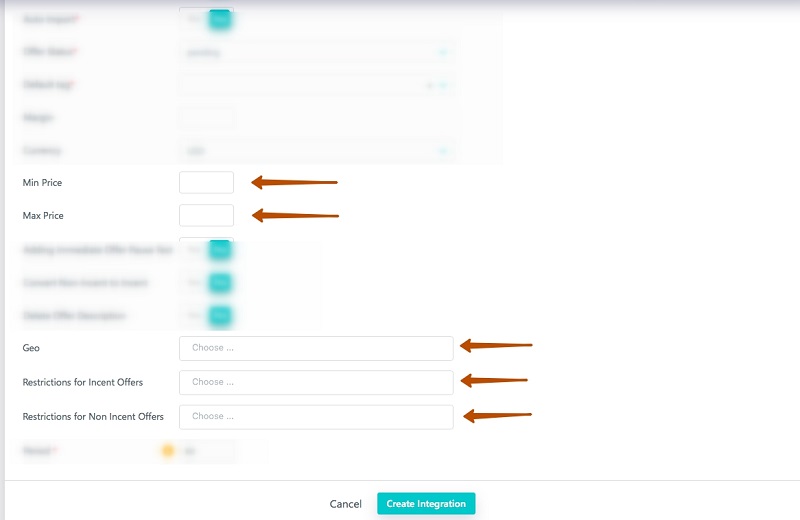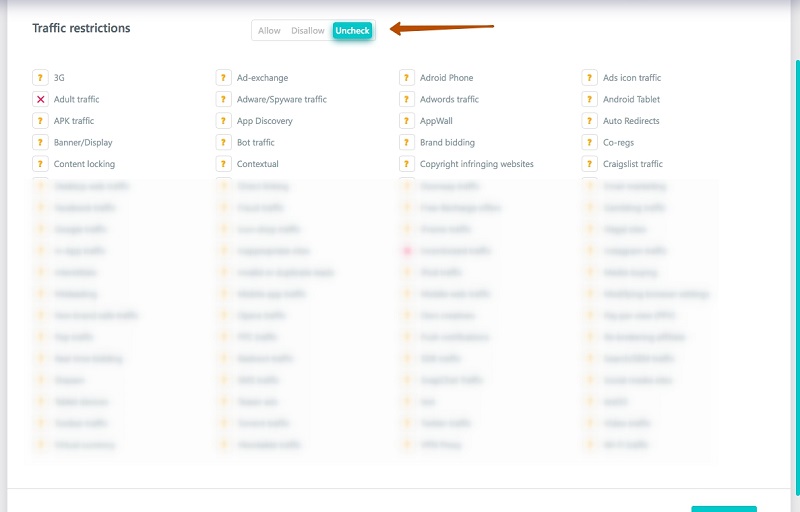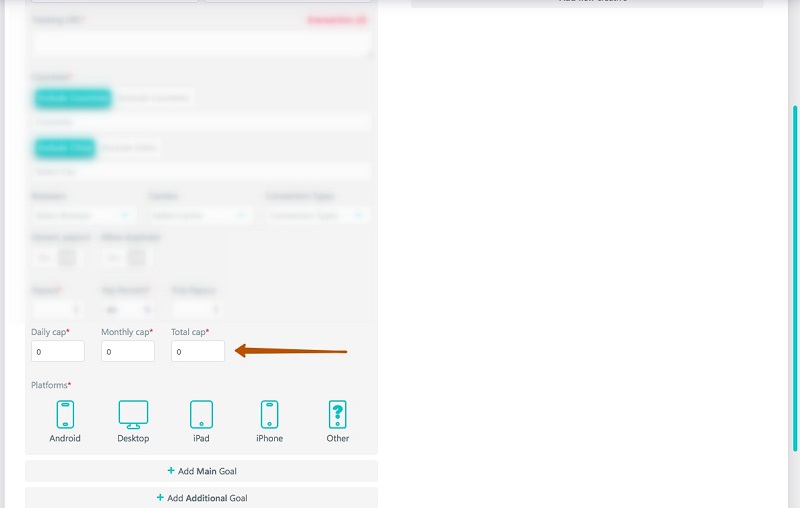Top 12 Essential Components of a Successful CPA Network

- October 04, 2018
- by Vitaly Sadovsky
- Reviews: 0
New CPA networks emerge weekly, if not daily. But how do they differ? And do they differ at all?
Whether your advertising agency rents a platform or went the hard way and developed one, there are certain things that any network requires to achieve significant results and still have the power to grow. We’ve paid special attention to such features and are happy to share our list with the industry in hope to inspire positive change.
So here’s a bit of instruction on how specific platform features can drive your network.
1. Define & customize.
Why?
Imagine a pool full of small fish: blue, green and red. And you are a bigger one which can only eat the reds. If you are to swim in straight lines with mouth agape, some blues and greens will end up in your stomach. You can also float in those straight lines slowly and open up for the reds, which will take too long (remember, the little fish is not static, it’s moving around the pool!). So, unless you don’t care what gets into your stomach or have all the time in the world, you’d better be fluid, agile and swim around as real fish does. No straight lines.
The same goes for any marketing agency and, of course, an affiliate network. Profound customization allows you to be thorough with both offers and traffic that goes through your system. It makes you way more productive and provides resources to achieve better results, while your partners can reach their campaign goals.
How?
1.1. CPA Offers.
One of the first things a marketer does when presented with a new product or service to promote — determining the target audience and their specifications. For an affiliate network, it means knowing your publishers, the sort of traffic they generate and, after that, which offers bring more conversions.
When you know your business and the type of offers that work best with the traffic you process, there is no reason to waste your time and money approving and processing those that don’t.
Setting up API with advertisers, make sure you choose which offers you want to pull from their side. It’s easy when you have partners like Affbank, who provide performing cost per action offers in abundance.
Be specific:
1.1.1. GEOs — if the most of you publishers generate traffic in Asia and the continental US, there’s no need for you to process offers targeted to Europe or Australia.
1.1.2. Prices — set up minimum and maximum prices according to the margin you’d like to get. That way your system won’t end up bloated with cheap offers that don’t allow your desired margin or pricey ones that don’t suit your publishers.

1.1.3. Restrictions — define which sources of traffic are off limits for each specific offer to notify publishers what you can’t help them monetize in this particular instance. This way, you will face fewer scrubs, won’t have to deal with frustrated publishers and will protect your network's reputation.

1.2. Traffic.
The reasons for being keen on definition and clarity are quite the same here. When you transfer irrelevant traffic from a publisher to an advertiser, you face scrubs. Scrubs are bad news for two primary reasons: a) the publisher will always claim that you’re the one who’s wrong and their traffic is entirely ok; b) the advertiser will have little respect to a partner, whose traffic is 60% off the mark.
1.2.1. Eliminate sub-publishers who don’t perform.
Alas, not every publisher takes care of their own partner set. It may lead to a usually decent publisher to have a few sub-pubs who are not unfamiliar with fraud or merely useless traffic. But why cut the ties with your partner if you can eliminate the sub and be done with it? As a result, you still get the necessary traffic plus maintain relationships with an ok publisher.
1.2.2. Customize cap.
When your network deals with thousands offers a day, who’s going to make sure there are no overspendings and the budget is under control? Cap will. This feature can be a savior, especially when you can set daily/monthly indicators for each offer.

1.2.3. Measures against fraud.
Everyone in the industry knows how much we lose to fraud each year. And some simple measures taken within a platform can change the numbers drastically.
1.2.3.1. Whitelist.
When you add an advertiser, there has to be a way to add a list of traffic sources he considers credible. As an addition, a platform can allow you to add a specific publisher from your own system, so that a trusted advertiser will receive traffic from your most trusted publisher.
1.2.3.2. Security token.
Advertiser Security Token is more of a necessity than a feature, nevertheless, we feel the need to mention it swiftly. The token allows authenticating each conversion with a unique token string.
2. Manage & automate.
Why?
Because no one wants to waste their time on things that can be automated. Affiliate marketing is no tea ceremony, and one hardly can meditate while manually managing permissions or adding margin to every offer by hand. It’s all about the final result, so if a routine process can be automated — it must be.
How?
2.1. Team management & automatization.
Depending on the size of your affiliate business, you might have various levels of interns, account managers, department heads, etc. Surely same permissions a Dept. Head requires, e.g., edit permissions for a manager, can’t apply to an intern, who needs to be able only to view offers, publishers and advertisers.
It’s essential to have an ability to define who can do what, i.g.:
- user settings;
- access hourly statistics;
- filter the statistics by publishers, advertisers;
- view offers;
- view dashboards;
- etc.
Once you’ve created certain roles and have set up the level of access for each, all you need to do is assign. Now, no matter how many people would join your team, you won’t need to determine which permissions to grant, only to assign the role.

2.2. API integrations.
We’ve already talked a bit about API integrations and what abilities it should have to provide better service (i.g. choosing which offers to receive from your advertisers). However, there are some other features you’d want to have within integration, such as:
2.2.1. Offer updates.
If an advertiser changes the offer, this attribute will make appropriate changes to the one stored in your system. Although auto updates generally play in your favor, it may come useful to add an ability to pause the process.
2.2.2. Automatic approve.
When you have many trusted partners, you can save a lot of time with this feature. Choose to approve their offers automatically, and the publishers would see it right away. It means you can be one of the firsts to process these offers and bring measurable results.
2.2.3. Margin setup.
How many new offers does your network process on a monthly basis? The time a manager can spend on checking the link, approving and setting up margin for each of those is gone. And you’ve paid for it unless the platform does it. Set your margin for each offer you receive, no matter, if it’s from a trusted partner or a new one. Your manager can adjust some manually if there’s a reason to. Otherwise — one more routine task off your list, more time on your hands.
2.3. Verifying tracking links.
Non-active offers, misleading redirects, broken links. No one on the rebrokering chain will benefit from that. When you run a network with many offers processed daily — connecting a checking solution through API or having a Built-In software will save your time, money and business reputation.

As you can see, in Orangear Performance Marketing Platform, we’ve decided to visualize the latest results right inside the list of offers.
As you can see, a performance marketing platform can be the best assistant when it comes to automating routine tasks and helping you get rid of both offers and traffic that promise low or no return on investment (ROI) at all. You can use this article as a starter guide to building your solution. Or you can benefit from our finished product — Orangear Performance Marketing Platform — that has all those features ready to help you earn more today.
Recent Posts
December 16, 2025
Stop Waiting, Start Scaling: Why Sms-online.pro is the Secret Weapon for High-Volume Affiliates
Learn about SMS-online.pro and their offerings for affiliate marketers.
Read moreNovember 21, 2025
The 2025 Arbitrage Toolkit: Using Proxies to Scale Campaigns Safely
In 2025, anti-fraud measures and tighter GEO regulations make it difficult for traffic arbitrage. Fi...
Read moreNovember 14, 2025
BigTraff Review: 500+ Gambling Offers & Your Competitive Advantage with Custom Chatbots
Learn about BigTraff: the larges iGaming affiliate program with custom chatbot solutions.
Read more


Written by
Vitaly Sadovsky
Hi! My name is Vitaliy, and I am Head of Marketing at Orangear.
Having years of experience in digital marketing and ad tech, I am eager to share some of my knowledge and views with the readers. If you have any questions or suggestions, feel free to message me on https://www.linkedin.com/in/vitaly-sadovsky-70151359/